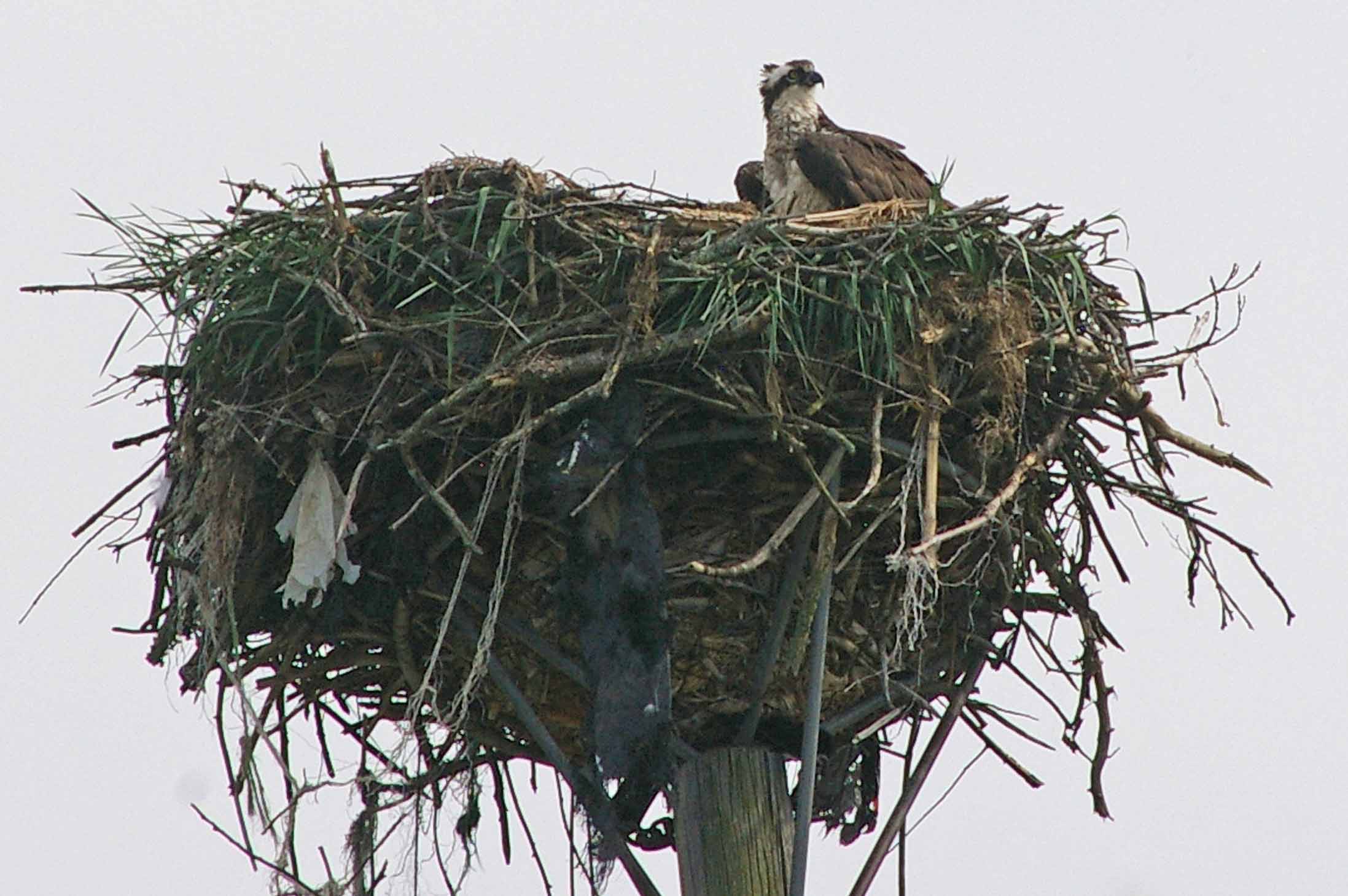
Ospreys are dramatic hunters, often swooping down on fish from 200 feet in the air.
Bob Frye/Everybody Adventures
There are a lot of anglers who wish they could be this successful.
Imagine going to your favorite lake. Fifteen minutes or less after making your first cast, on average, you reel in a fish.
And not just any fish, but one that weighs one quarter of your body weight.
That’s a good day on the water.
Well, ospreys – commonly called “fish hawks” because fish make up the majority of their diet – do that on a consistent basis. At least mature ones do.
Juvenile birds just learning are a little more mistake prone. But adults are fabulous and efficient raptors.
“Ospreys employ several methods of hunting, depending on local conditions,” says Mass Audubon, the largest nonprofit conservation group in Massachusetts. “A bird may hunt from a perch above a pond or lake, or from the air, surveying the area and using its visual acuity to scan the water below. Once a target fish is selected, the bird will dive nearly vertically, plunging into the water feet first, grabbing the fish with its talons, and flying off to a nearby perch to eat.

“If an osprey sees a fish swimming near the surface, it may hunt by approaching from a long gentle glide and plucking the fish from the water, an elegant-looking hunting strategy also commonly used by bald eagles.”
Such hunting is dramatic to witness.
Ospreys are relatively big birds, measuring 24 inches long with wingspans approaching six feet. Dark brown above and white below, with some marking on the chest and dark eye stripes, their wings form a deep V shape in flight.
When they drop down to the water, it’s often from heights of 50 to 200 feet.
And when they catch a fish, ospreys know how to handle it. Barbed pads on their feet make slippery fish easy to grip.
But they take things a step further, turning those fish in their talons so that they’re positioned head-first in flight to lessen wind resistance.
All that will be evident soon.
One of the most widely distributed birds on the planet – populating every continent but Antarctica – they travel far and wide.
Ospreys that breed in North America migrate to Central and South America for the winter. That poses no problem. Birds may travel 160,000 miles in their lifetime, which can span 15 to 20 years.
And right now they’re on their way back north.
Ospreys typically return to breeding grounds in the Northeastern United States in late March or so. They have high “site fidelity,” meaning that they generally return to the same nest sites year after year.
And what sites they are.
Ospreys will use manmade nesting platforms as well as natural ones. Wherever they set up home, though, their nests get big over time.
“After generations of adding to the nest year after year, ospreys can end up with nests 10 to 13 feet deep and 3 to 6 feet in diameter, easily big enough for a human to sit in,” says the Cornell Lab of Ornithology.
They’re sometimes the kind of place a hoarder could call home, too.
“The osprey is an avid collector,” says Maryland’s Department of Natural Resources. “Its conspicuous nests, found atop dead trees, channel markers and telephone poles, have been known to include rubber boots, bicycle tires, Hula Hoops, television antennae, styrofoam cups and plastic containers in construction — just one more important reason to keep our waterways and landscapes clean, and free of trash and debris.”
Breeding pairs — ospreys mate for life – produce one clutch of one to four eggs annually, somewhere between mid-April and early May. The male does most of the hunting for food, while the female does most of the child rearing.
Young ospreys are flying on their own by six to seven weeks.
If they make it that far. Not all do.
Osprey eggs do not hatch all at once, but over a period of days. If there’s plenty of food to go around, all of the young birds share in the wealth. If it’s not, the older may dominate the younger to the point they don’t survive.
But overall, ospreys are doing better now than they have in a long time.
As with many birds, widespread use of the chemical DDT – which made their eggshells so flimsy as to impact hatching success – decimated populations.
“Use of DDT in the late 1940s unleashed what would become a slow, steady stranglehold on ospreys and other birds of prey. By eating contaminated prey, the birds ingested the insecticide that, in turn, induced them to lay eggs with extremely thin shells – shells often so fragile, they broke when sat upon,” says the Pennsylvania Game Commission.
Yet today, they’ve made a big comeback.
For example, there was only one known osprey nesting pair in Pennsylvania in 1986. In 2016, the Game Commission says, there were 148, spread across the state.
Fortunately, the state is far from unique that way.
“Ospreys have made a good comeback in many parts of North America,” says the National Audubon Society.
So this year, while fishing, paddling or otherwise on or near the water, look up. One of the nation’s most incredible birds may be overhead.
MORE FROM EVERYBODY ADVENTURES
Check this out, too: Taking a look at the underappreciated gray fox
And read more: Love the outdoors? Sign up to receive the free weekly Everybody Adventures newsletter. It’s got award-winning stories and videos on hunting, fishing, camping, paddling, backpacking and more from around the country. Get it here.
Follow us on Facebook, Twitter and Instagram.









